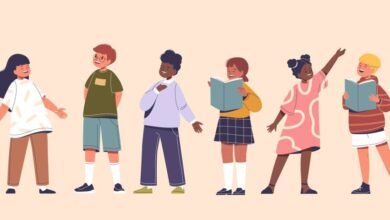
“Nathan, I really want you to do well today. How can I help you with that?” instead of, “Nathan, you have an F in my class, don’t you want to get a good grade? Why can’t you behave?”
Both statements show Nathan that he is accountable for his behavior. The first statement, however, shows him you believe in his success and it is his choice how he behaves. You are rooting for him, yet he has agency. The second statement puts a student on the defensive, which rarely works. Be smart with your words and work on the relationship. The way you communicate makes a big difference in how your words are received by the students.
Be the teacher you are.
This seems like a simple statement, but I have always found it profound. Be your best self inside your classroom. What excites you that you can use in the classroom to accelerate learning? Use your personality strengths in your teaching. Do you love acting? Then use it in your teaching. Are you a great artist but feel insecure teaching math? Draw out some math problems! Do you love playing the piano? Why don’t you play to the students as they are working? Your strengths are one of the biggest assets to your classroom. I love being silly and playful in life, but for many years I tried to run a very serious classroom because I was afraid of doing anything different as a new teacher. Once I brought my silly side to the learning, my students’ test scores jumped, the students were happier, and I was a happier teacher. We know there are still serious times in the classroom, but we also know when we can laugh together. Weave your personality into the lesson. If you are a golf-loving science teacher, why not bring in your nine irons on the day you teach force? If you do this, you are much more likely to be a better and “real”—as the students like to say—teacher.
Work on your weaknesses.
In addition to using your strengths to become a “real” person in the students’ eyes, you have to be willing to work on your weaknesses if that is what the students need. Let them know you learned how to do this specifically for them. You are a student as well. Think of yourself as a caretaker. This is the work you have to do outside of school hours (or during your prep if you’re super efficient). This is what your students need. Say two inexperienced teachers are discussing groupwork. One teacher says, “Groupwork is just not my thing. It’s easier to just have them work independently.” The second teacher says, “I know groupwork is better for the students but I also know this is my weak spot. I’m going to learn how to do it.” Which teacher do you think the students will respect more and will have more prepared, engaging lessons?
Use discipline sparingly.
If you discipline, do so for a specific purpose and tell students why. They will respect your authority and admire that you rarely have to use your power. Anger or disappointment can be effective only if used very rarely. Anger used often is completely ineffective. Discipline once, within the first two months of school, and only after you have taught the structures of your classroom. This establishes boundaries. Students need you to be stern when they cross your boundaries. For example, you could address your class with, “Do you remember the classroom agreements we discussed? Do we need something added to address side conversations? I want to make sure we’re on the same page. If there’s a misunderstanding, I can certainly address that. I know you’re not trying to be malicious, but you are in fact breaking an agreement.” Learn to pick and choose your battles. I always asked myself, Is this affecting the learning of the whole class? If the answer is yes, it is your job to correct the behavior. If the answer is no, do not stop the classroom for just one student. It’s not fair to the other students, unless you are using it as a teachable moment.
According to one metastudy, teachers who have strong relationships with their students have 31 percent fewer behavioral issues in their classrooms. This statistic has a huge impact on the amount of learning that goes on in the classroom and the amount of quality teaching that happens, as well as on your general well-being. Building a mutually respectful relationship with a student starts the minute they know you know their name and you use it often when speaking with them. Strong relationships with students don’t happen by chance. They happen through the way we decide, consciously or unconsciously, to interact with students from Day 1.




